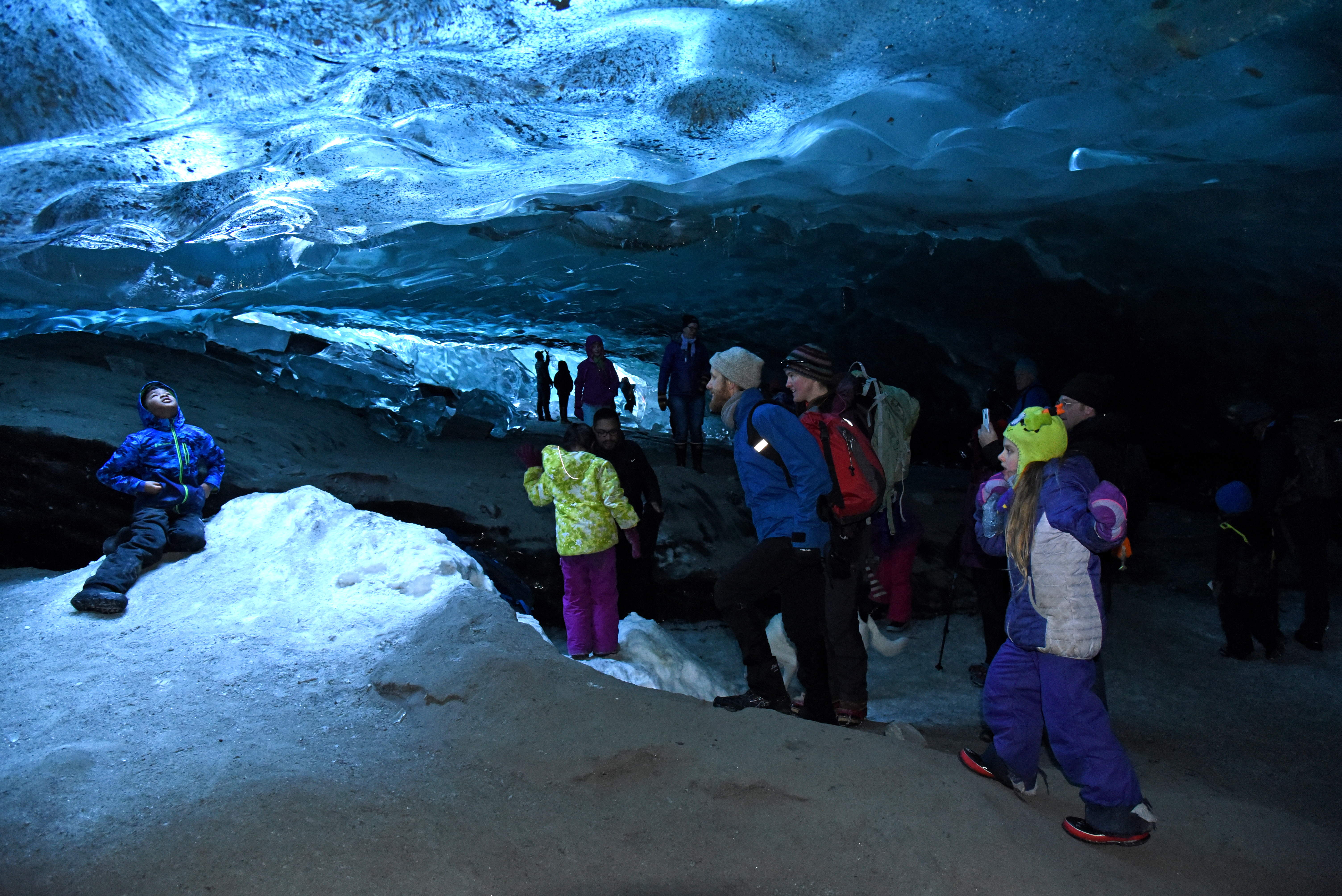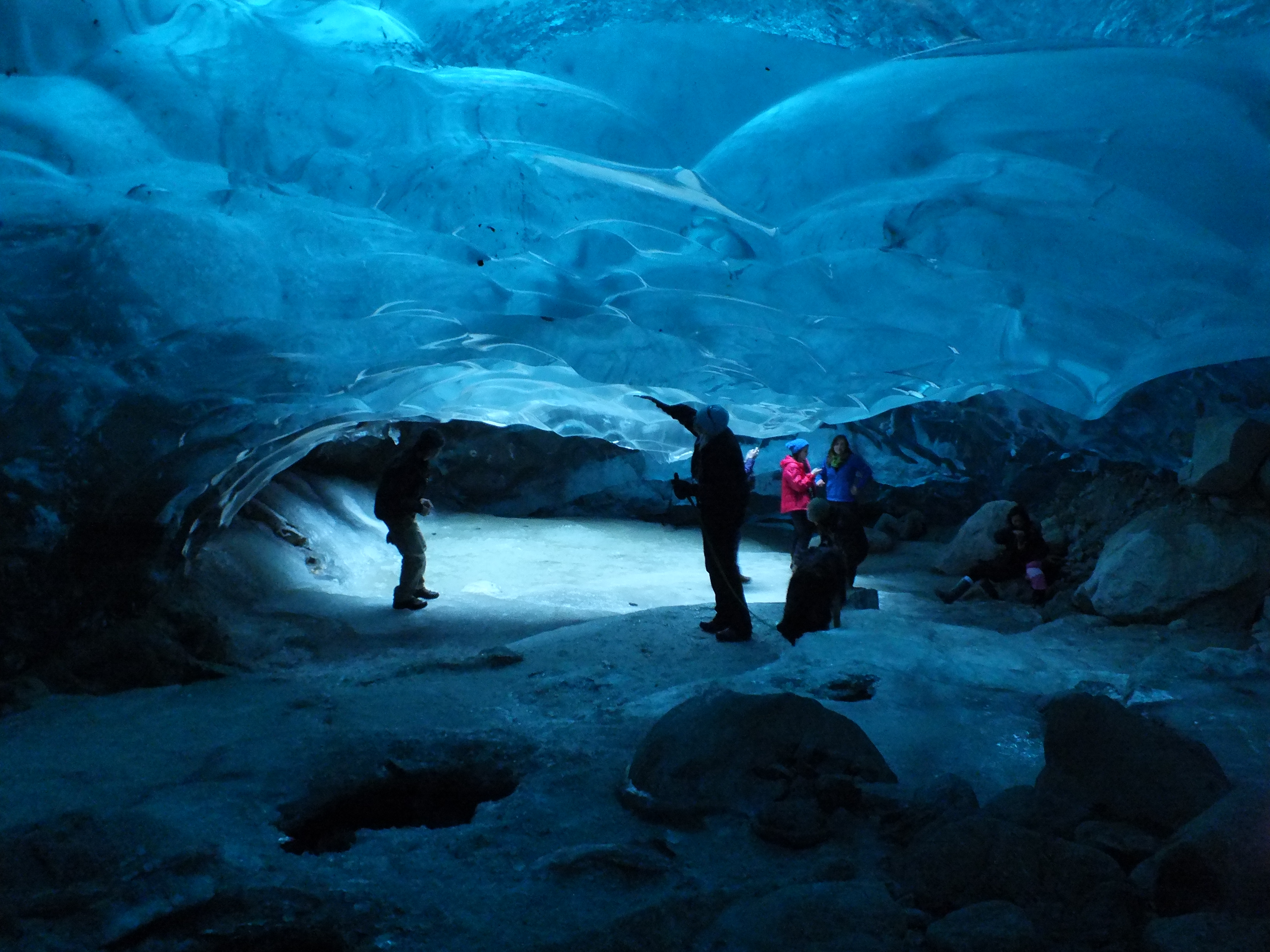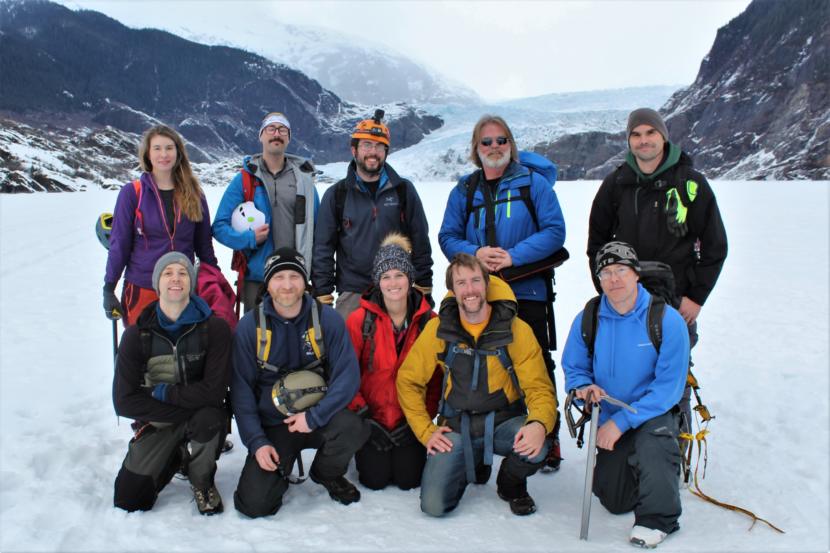
As most of Juneau can tell you by now, the Mendenhall Glacier ice caves are a sight to behold.
Although the famous blue caverns from several years ago have disappeared, word of a new cave spread over social media this winter and brought crowds of locals to the glacier.
But while hiking to the cave is a remarkable experience, it also comes with a fair amount of risk.
On a sunny day in February, several dozen people were walking across frozen Mendenhall Lake toward the western corner of the glacier.
Some were on skis. Others had dogs or pulled kids on sleds.
One by one, they passed by a yellow sign near the visitor center warning about unpredictable ice conditions.
To enter the cave, hikers must make a dubious choice between sliding down a chute or crouching under low-hanging ice at the back.
Inside, they find themselves in a narrow chamber made of brilliant blue ice.
Open shafts create natural skylights in the roof overhead. The ground is ice, with a layer of silt that provides some — if not much — traction.
A 360° video taken from inside a Mendenhall Glacier ice cave. Click and drag to look around. (Video by Matt Miller and David Purdy/KTOO)
Toward the back of the cave, huge hunks of ice litter the floor.
Walking around inside feels like being in the center of a wave that froze just as it was about to crash.
About a month later, the weather had warmed up and the crowds had waned.
Professional photographer Matt Brown was still out at the lake exploring.
He said he’d been out to the glacier just about every weekend this winter, photographing the cave and venturing on top with climbing buddies.
“The ice caves that we see right now are just more of an overhang cave, and those ones are really dangerous,” Brown said while standing on the frozen lake.
He said the caves that were popular several years ago were much larger and were carved out by water, growing bigger over time.
That means they were more stable.
But Brown said the caves this winter are actually shrinking. He doesn’t expect them to last long.
“Even though it may be 20 feet thick, you’re looking for cracks and fractures that might calve off, because they can come off at any time,” Brown said.

Brown considers himself an ice cave enthusiast. He’s about as close to a local expert as you can find.
When people ask him for advice about visiting, he tells them not to go without the right gear — crampons, a helmet and a backpack with emergency supplies.
He said everyone needs to understand the risks involved when getting up close and personal with a glacier. You never know what can happen when ice is involved.
That’s why he gets nervous when he sees people heading out there with small kids.
“I warn people all the time, but they continue to go out with their infants and children,” Brown said. “I say ‘Hey look, you have a choice, your child doesn’t.’”
This winter, Capital City Fire/Rescue made several rescues at the glacier.
One was in December when a biker fell through the ice. Others were for people injured at the ice caves who couldn’t hike back out.
Everyone ended up fine, but in at least one case, staff said the individual was not properly dressed.
“People coming out here get hurt wearing shorts and tennis shoes, so it’s never safe when you do that,” Brown said.
The U.S. Forest Service doesn’t monitor the ice caves or the thickness of the ice on the lake.
Laurie Craig is a retired naturalist with the Forest Service. She worked at the Mendenhall Glacier Visitor Center for 15 years.
She said she used to join the crowds of people out on the lake each winter, but stopped when she began working there.
“It was only when I got to look out those windows for 15 winters,” Craig said during a recent interview. “It really opened my eyes to how volatile the situation is.”

Craig is quick to point out that the body of water around the Mendenhall Glacier is not a typical lake.
Underwater currents mean the thickness of the ice varies depending on where you are. Parts of it are also surrounded by steep rock walls and a shelf of ice.
She has seen rockslides and calving events send splinters across the frozen lake in seconds.
Even though it wasn’t part of her job, she said started keeping an eye on people from the visitor center as they were out on the ice.
“It’s the conditions that we can’t count on that are unpredictable that could just really take everybody out, and I would hate to see that,” Craig said.
Thankfully, the worst-case scenario Craig fears hasn’t happened.
While injuries and deaths can and have happened at the lake in years past, they’ve been relatively few.
“We’ve seen some pretty sad things out there, but I knock on wood all the time that we’ve been very fortunate,” Craig said. “If the glacier has a spirit, it’s a kindly one.”
By this point in the year, warm weather has caused large chunks of lake ice to break up near the face of the glacier.
Walking across is not an option anymore.
The ice cave itself, if Brown is correct, likely won’t last long either.
But he said continually melting ice and changing seasons mean more caves will probably form in the future.
And as long as there are caves, people will want to see them.




